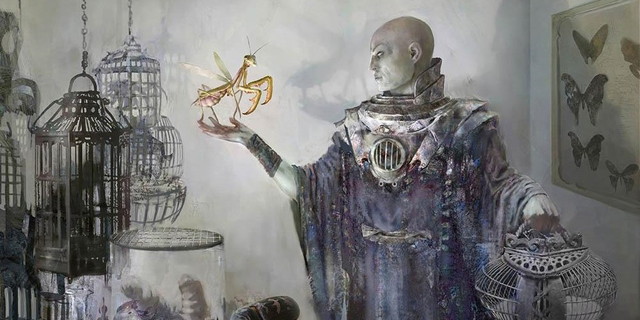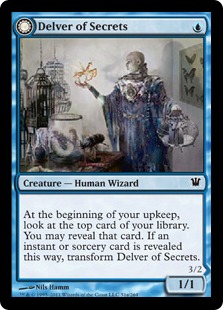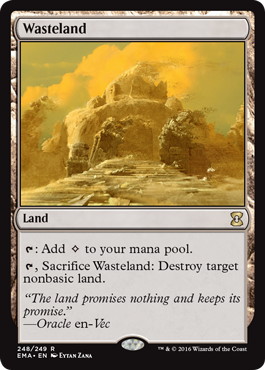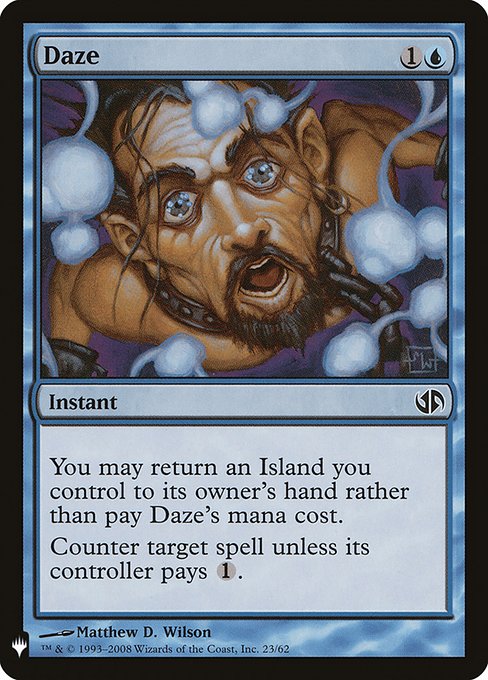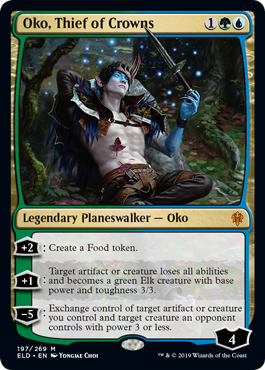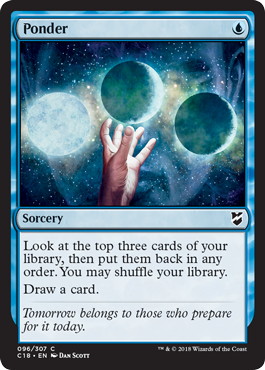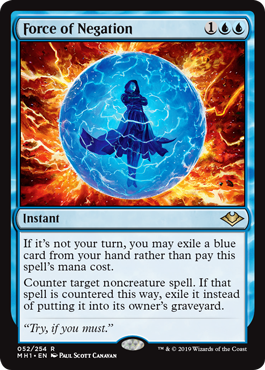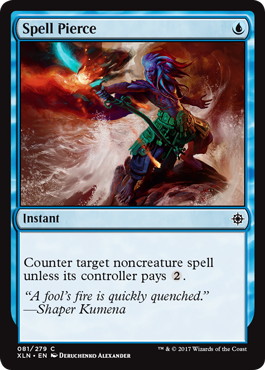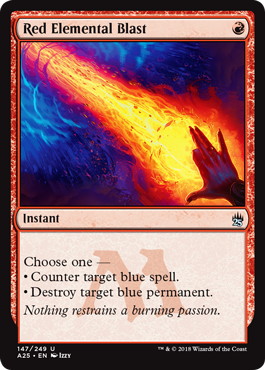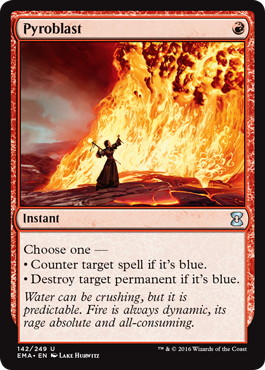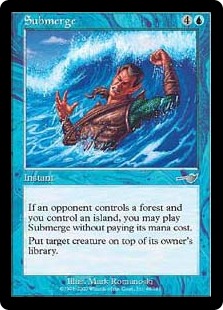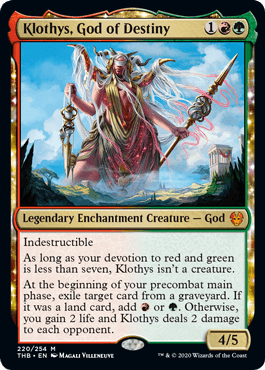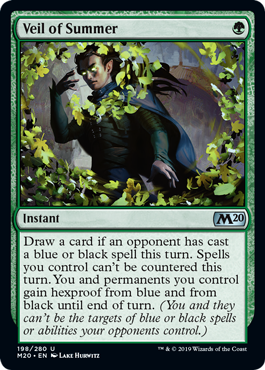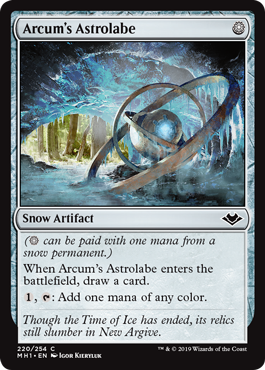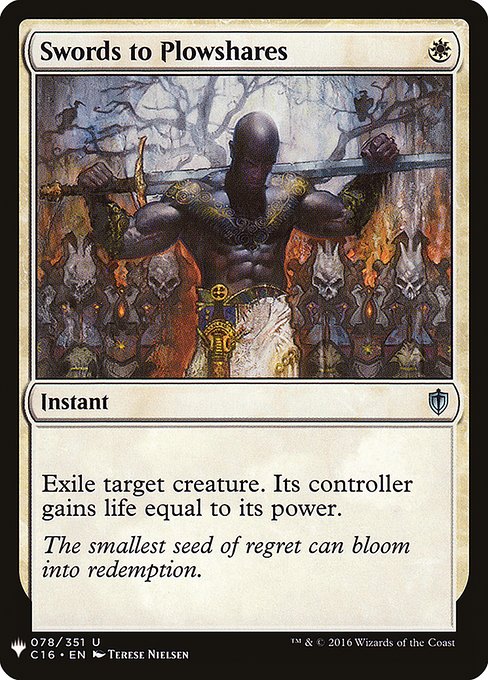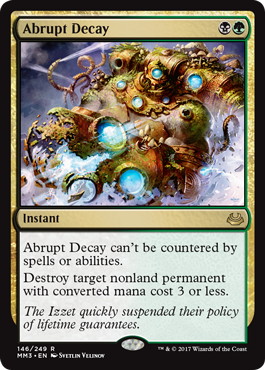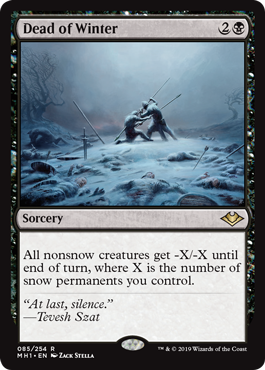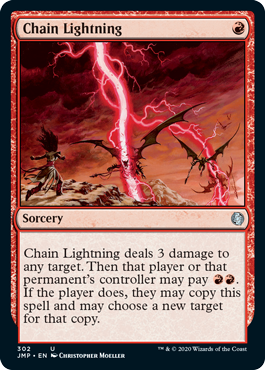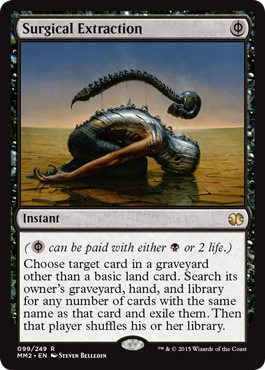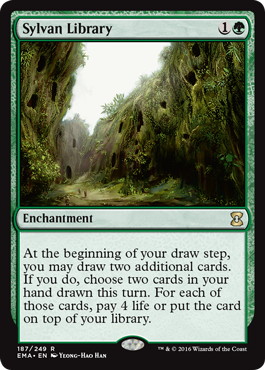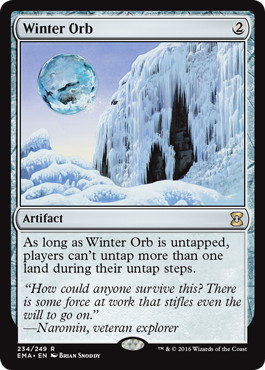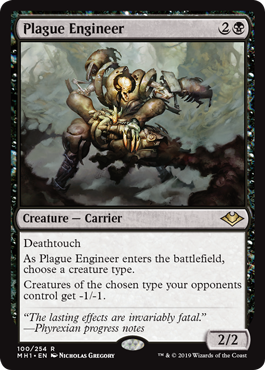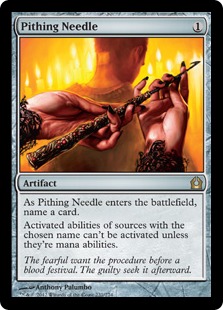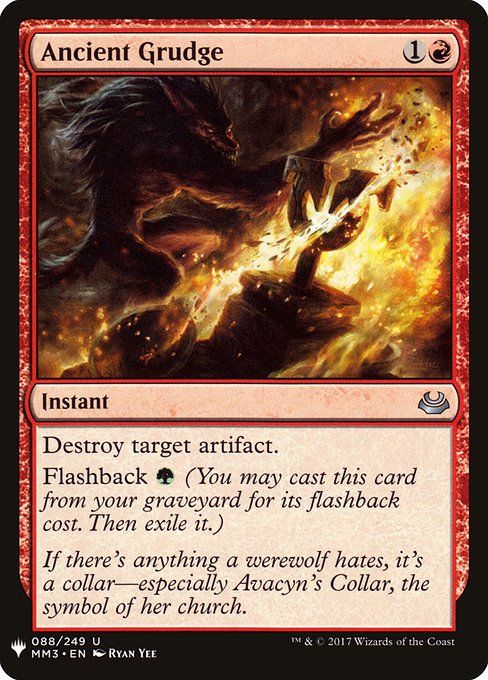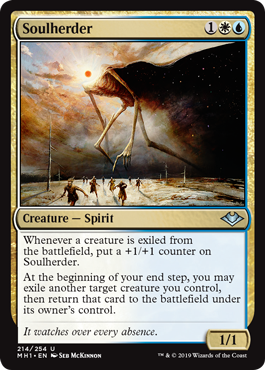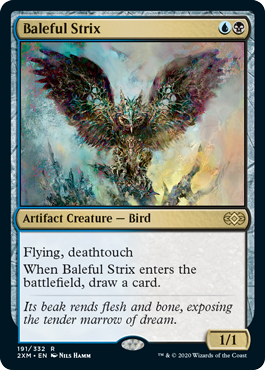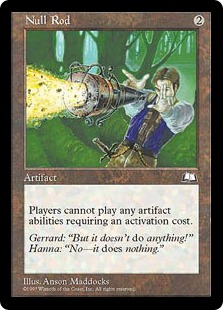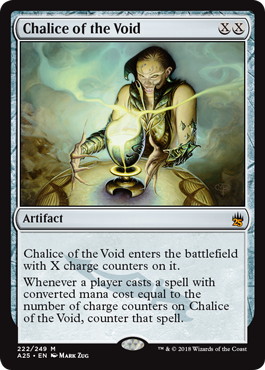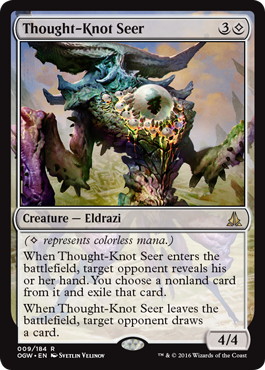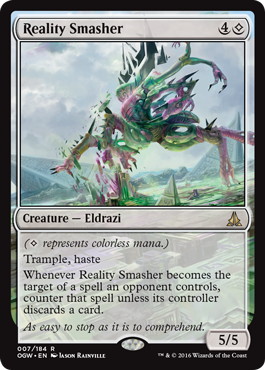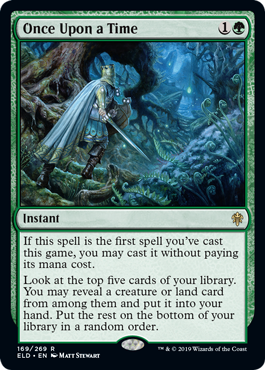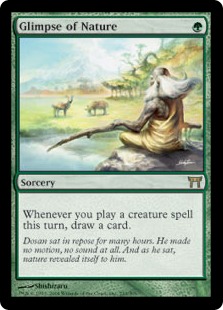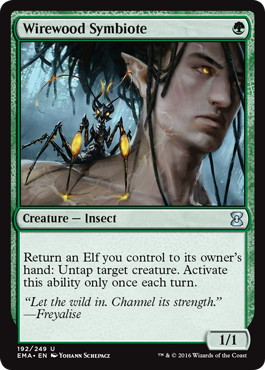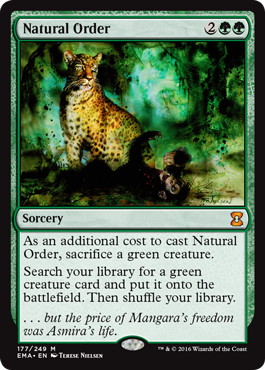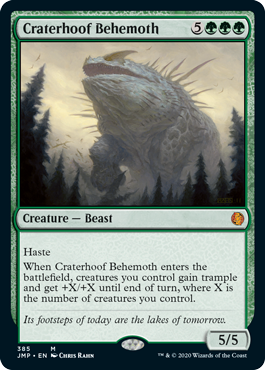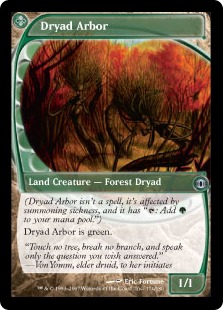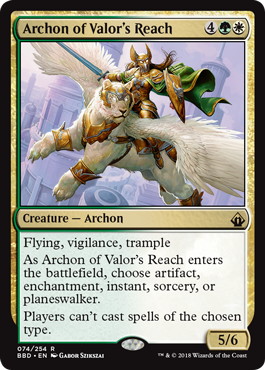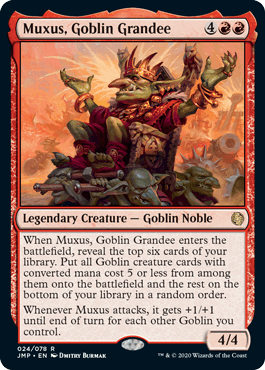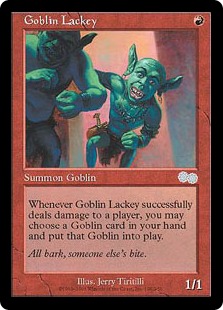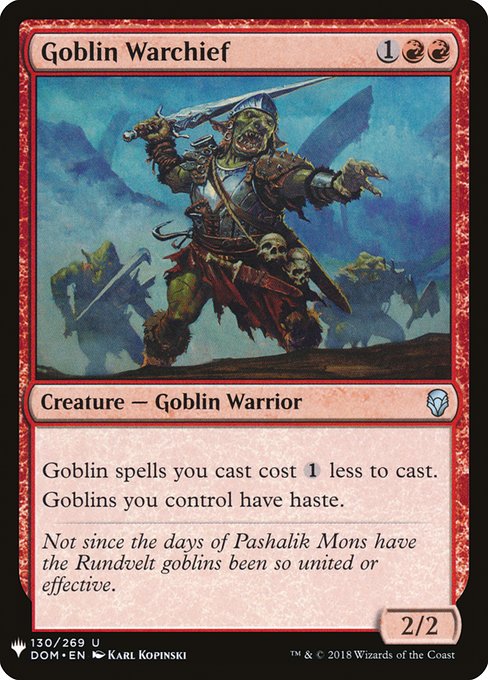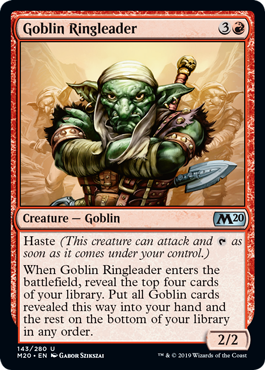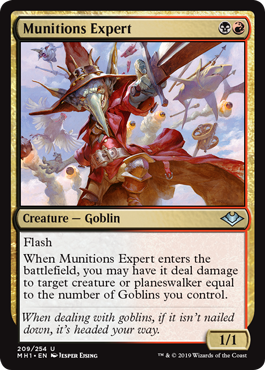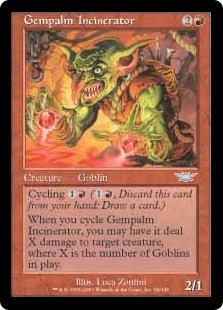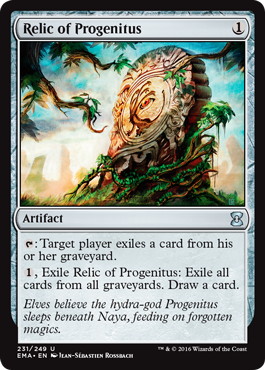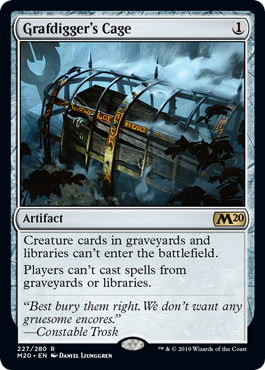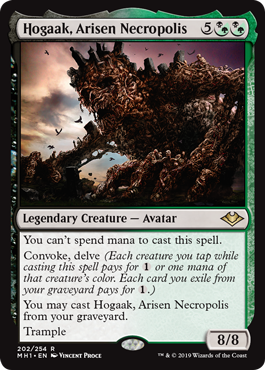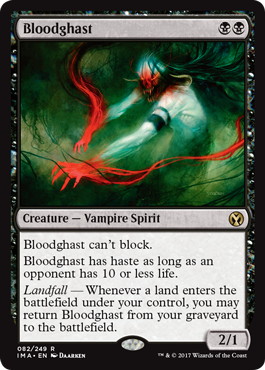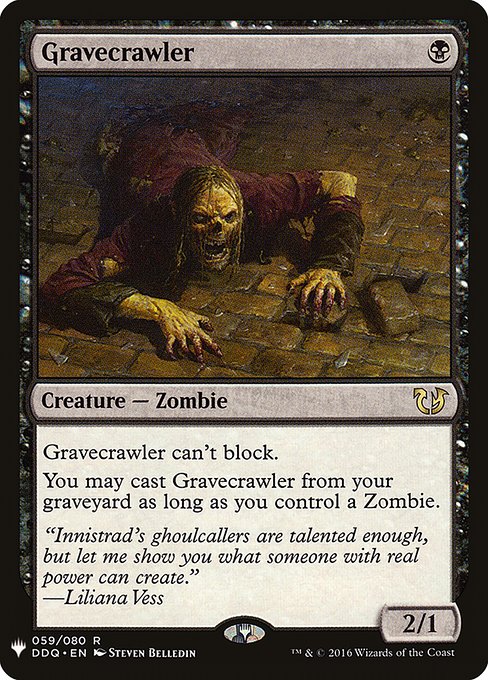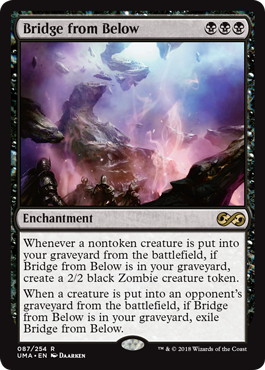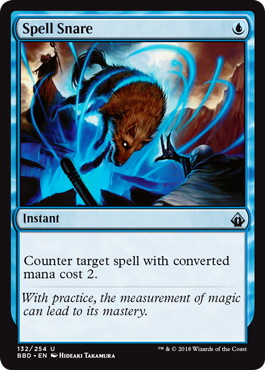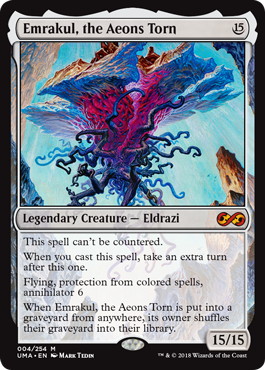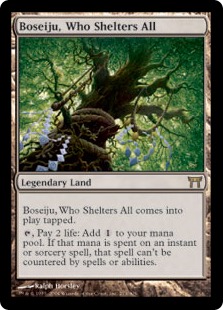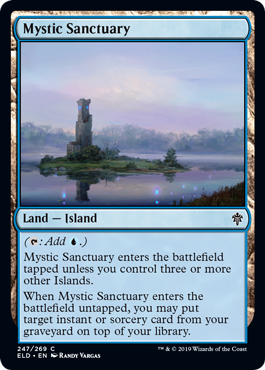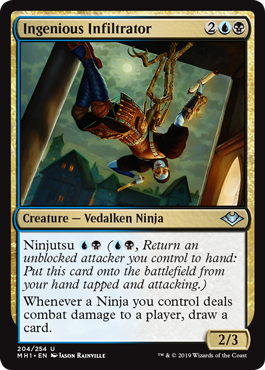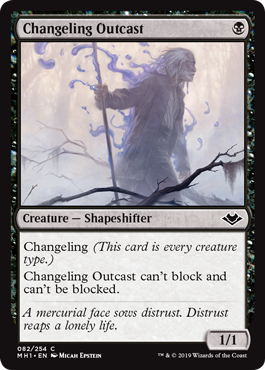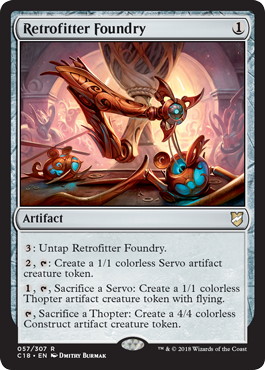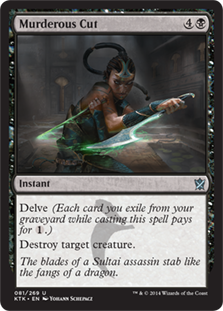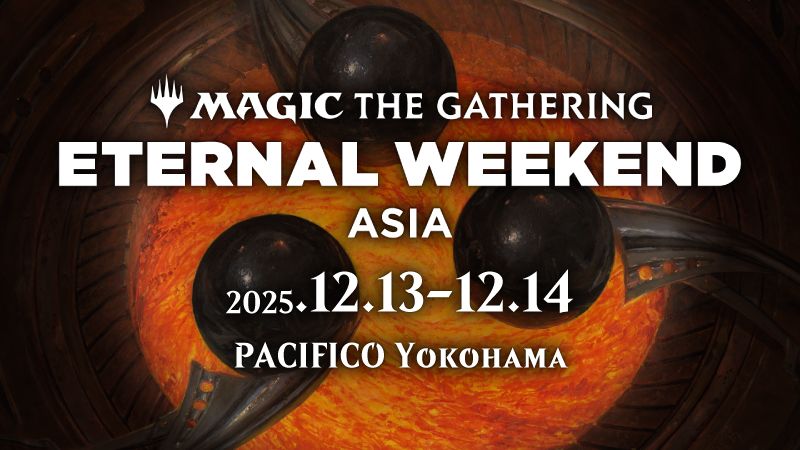Introduction
Hello, everyone!
During the past seven weekends, I was fortunate enough to reach the Top 8 of 9 Magic Online Legacy Challenges, with Bant OmniTell, UR Delver, twice with Sneak & Show and five times with RUG Delver.
Since I have received several requests about a RUG Delver deck guide, this will be today’s topic. I won’t go into the general history of the deck or how the configuration developed, and will instead focus on how I approach many matchups in the current Legacy metagame.
While I don’t have the same experience with Delver strategies as with Sneak & Show, I still hope this article will be informative and enjoyable for you. Let’s get right into the matchup guide!
- Jonathan Anghelescu
- – RUG Delver
- Legacy Challenge #12195652
- (3rd)
3 《Volcanic Island》
2 《Flooded Strand》
2 《Misty Rainforest》
2 《Polluted Delta》
2 《Scalding Tarn》
1 《Wooded Foothills》
4 《Wasteland》
-Land (19)- 4 《Delver of Secrets》
3 《Dreadhorde Arcanist》
3 《Tarmogoyf》
2 《Hooting Mandrills》
-Creature (12)-
4 《Lightning Bolt》
4 《Ponder》
1 《Chain Lightning》
1 《Preordain》
1 《Spell Pierce》
1 《Spell Snare》
4 《Daze》
2 《Force of Negation》
4 《Force of Will》
3 《Oko, Thief of Crowns》
-Spell (29)-
2 《Red Elemental Blast》
2 《Surgical Extraction》
2 《Submerge》
1 《Klothys, God of Destiny》
1 《Blazing Volley》
1 《Run Afoul》
1 《Ancient Grudge》
1 《Sylvan Library》
1 《Null Rod》
1 《Winter Orb》
-Sideboard (15)-
Mirror Match (RUG Delver)
I want to start off with the RUG Delver mirror, considering it is the most common matchup at the moment.
The pre-board matchup dynamic can flow into different directions. Since both players have access to 4 copies of 《Wasteland》 and 0 basic lands, there will be the occasional non-game where one player gets mana-screwed, while the other runs away with the game. These games end even quicker now than perhaps a few years ago, since an unanswered 《Dreadhorde Arcanist》 will make a comeback from the other player much more unlikely. Still, I have turned around a few games where I had to pass the turn with 0 lands on the battlefield, usually involving resolving a 《Hooting Mandrills》 on the following turn.
This brings us to another dynamic that is especially relevant pre-board: the green creatures. Since the only way to answer an opposing 《Tarmogoyf》 (usually a 2-3 of) or 《Hooting Mandrills》 (2-of) requires multiple 《Lightning Bolt》s or an 《Oko, Thief of Crowns》, the player drawing and resolving the majority of green creatures in the mirror often has a big advantage. 《Dreadhorde Arcanist》 on the other hand, while powerful if unchecked, gets cleanly answered by one of the five 《Lightning Bolt》 / 《Chain Lightning》 effects in the deck.
Considering the power of the green creatures, you should try to be wary of exposing yourself on the early turns, so your opponent can’t find a good window to resolve 《Tarmogoyf》. For example, if you tap out for 《Dreadhorde Arcanist》 on turn 2, even with 《Daze》 in your hand, your opponent can put you in an awkward spot by responding with their 《Tarmogoyf》 and own 《Daze》 to protect it on their turn. Therefore, if you have other plays available and don’t get a huge tempo loss, de-prioritizing your 《Dreadhorde Arcanist》, to make it less likely your opponent’s green creature resolves, can be a viable pre-board strategy.
Still, even pre-board, a resolved green creature on your opponent’s side doesn’t have to mean they run away with the game, since you can still resolve your own to create a stalemate. Also, you can often use the window created after a counter-war over a green creature to resolve 《Oko》, which usually trumps 《Tarmogoyf》 and 《Hooting Mandrills》 in pre-board games, where players don’t have access to 《Pyroblast》 effects, yet.
There are other discussions about intricacies and general gameplay patterns in the mirror, such as whether you should 《Wasteland》 your opponent on the draw if they led off with 《Delver of Secrets》, and how much that decision is influenced by whether or not their land drop was a fetch-land. I believe this comes down to personal playstyle preference more than an answer of right or wrong, although I think you are already unfavored on the draw and the possibility of stealing the game by hitting your opponent’s only land outweighs the potential tempo loss if they do have another land.
Another similar example that has been brought up on Twitter and other forums is whether you should lead off with 《Delver of Secrets》 on turn 1 in the mirror (assuming both players know they are playing the mirror in game 1) if you only have one land and could alternatively cast 《Ponder》 or 《Preordain》. Again, these questions are hard to answer objectively and require more context, but they give you a glimpse into the impact of little decisions in the Delver mirror.
Sideboarding

Against RUG Delver (On the Play)

Against RUG Delver (On the Draw)
I often also board in 《Klothys, God of Destiny》 on the draw, but she will sometimes be too slow there, not only because she takes a turn to come online, but also because some players will board out 《Daze》 on their draw, but almost never on their play. I recommend never boarding out 《Daze》 in any Delver mirror, since I consider it the best card, providing the biggest tempo swings, both proactively and reactively.
The post-board games still mostly revolve around the green creatures, and a little less around 《Oko》, due to the presence of 《Pyroblast》 / 《Red Elemental Blast》. When blasting an opposing 《Oko》, remember to try playing around 《Daze》, if you can afford to, by letting them create a Food Token, untapping for your turn, and then blasting their 《Oko》. Even if you are 《Daze》-proof while their 《Oko》 is on the stack, consider letting it resolve and blasting him on their end-step, to play around 《Veil of Summer》. Again, this is contextual and there will be situations where you actually want to play into a potential 《Daze》, for example if that will make it easier to resolve 《Klothys, God of Destiny》 on your own turn.
While I wasn’t convinced about 《Klothys》 in the mirror immediately upon picking up RUG Delver, I consider her one of the strongest post-board options now. Unless your opponent has an overwhelming board advantage, she is almost impossible to race, can weaken opposing 《Dreadhorde Arcanist》s, shrink 《Tarmogoyf》 and sometimes delay 《Hooting Mandrills》, especially recast ones that you 《Submerge》d previously.
Speaking of 《Submerge》, it provides a free answer to the impactful green creatures, although you will sometimes be in the awkward spot of having to cast 《Submerge》 just to put the creature back on top to avoid dying to it. Ideally, you want to “get them” in response to a fetch-land activation, as a tempo play to win a racing situation, to delay a 《Delver of Secrets》 flip by Submerging another creature or to deny a 《Dreadhorde Arcanist》 of top-decking a flash-backable spell.
Moreover, you should keep a potential opposing 《Submerge》 in mind when planning your turns, even though it is very difficult to actually play around it by avoiding to fetch green sources, since you rely on green spells to win the game. Still, try to plan your fetch-land activations in such a way that they can’t shuffle your 《Tarmogoyf》 back into your library, unless you have no alternative options.
Snowko
While there are various flavors of 《Arcum’s Astrolabe》 + 《Oko》 + 《Uro》 strategies, I want to focus on the classic and most popular 4- or 5-color Snowko Control and 《Oko》 Miracles here.
Using 《Arcum’s Astrolabe》 to keep their mana together without exposing themselves to 《Wasteland》, 《Oko》 and 《Uro, Titan of Nature’s Wrath》 (and sometimes 《Ice-Fang Coatl》) as win conditions, and a wide variety of removal from 《Swords to Plowshares》, over 《Abrupt Decay》 to even sweepers in 《Dead of Winter》, Snowko is one of the most difficult matchups for RUG Delver. Especially the configuration with a main-deck removal-suite of 4 《Ice-Fang Coatl》, 4 《Abrupt Decay》, 4 《Swords to Plowshares》 and 2 《Dead of Winter》 is very hard to beat in game 1.
Apart from the overload on removal, 《Uro》 does a great job at compensating any early life or tempo loss they might have suffered. Despite the potential presence of 《Dead of Winter》 (or 《Terminus》, in the Miracles build’s case), you can rarely afford to play around sweepers, since you have to maximize early damage output to avoid letting them get back into the game with 《Uro》‘s life-gain.
If they make it into the late-game on an even board or a board that gets even with one removal spell, you will have a very hard time to steal the game. Try to protect your early threats, or curve out multiple threats into 《Oko, Thief of Crowns》 on turn 3, then maybe hope to close out the game with a few burn spells. Their ambitious manabase means that they will stumble at times, especially without 《Arcum’s Astrolabe》. Even though they only play few non-basics, there will be spots where they have to fetch one of them, allowing a timely 《Wasteland》 to give you a decisive tempo advantage.
《Ice-Fang Coatl》 is a strong card against you, but is usually easily telegraphed and you have 4 《Lightning Bolt》s and 1 《Spell Snare》 to deal with it.
Sideboarding

Against Snowko (On the Play)

Against Snowko (On the Draw)
This boarding plan is rather fluid and should be adjusted, depending on which version of Snowko you are playing against. I like 《Force of Will》 more against the 4c (no red) version, as well as Miracles, since they have more impactful must-counters such as 《Terminus》 or 《Entreat the Angels》. You can definitely play around with and adjust the numbers of 《Force of Will》, 《Daze》, 《Wasteland》 and 《Lightning Bolt》 rather freely.
《Daze》, especially, is an interesting card against Snowko. There have been times where I wanted to keep all of them in, since the more 《Daze》s (and 《Wasteland》s, to a degree) you cut, the more you are trying to play the same “fairer” game that they are playing. 《Daze》 and 《Wasteland》 allow you to steal games through tempo plays in the early turns. Still, I believe it is often correct to cut some number, since, even with 《Daze》 in your deck, games will go long and 《Daze》 will be a dead draw.
Their configuration doesn’t change much post-board, since most of their removal is already main-decked. 《Plague Engineer》 can be annoying and, unlike 《Ice-Fang Coatl》, doesn’t get hit by 《Pyroblast》 effects, which is why I sometimes like to leave in all 4 《Lightning Bolt》s.
Concerning 《Pyroblast》 / 《Red Elemental Blast》, they can be used very versatile in post-board games. There will be situations where you want to blast a turn 1 《Ponder》 from your opponent, especially if you have a tap-out turn 2 play such as 《Dreadhorde Arcanist》. Still, most of the time it will be used to counter one of their key spells.
《Klothys, God of Destiny》, 《Sylvan Library》 and 《Winter Orb》 are all high-impact permanents (《Klothys》 is even 《Abrupt Decay》-proof) that serve different purposes. 《Klothys》 serves as win-condition and removes 《Uro》 or 《Snapcaster Mage》 / 《Mystic Sanctuary》 targets from the graveyard.
Note that if you want to guarantee the life loss against your Miracles opponent, make sure to target a sorcery (or creature / planeswalker / enchantment), so that they can’t flash it back with 《Snapcaster Mage》 to fizzle your trigger. Also note that if you want to 《Pyroblast》 an 《Uro》 and exile it with 《Klothys》, you have to destroy 《Uro》 on your upkeep (in case you were tapped out on their turn).
《Sylvan Library》 provides neat card advantage and can be devastating on turn 2. 《Abrupt Decay》 answers it cleanly, but that leaves less removal for your creatures and 《Oko》. Do, however, be slightly careful of paying life too freely, since an 《Arcum’s Astrolabe》 or 《Ice-Fang Coatl》 on their side can quickly turn into a considerably clock if they resolve an 《Oko》 and you have gone below 10 life with 《Sylvan Library》. That shouldn’t be an issue too often, though.
《Winter Orb》 is another often game-deciding permanent, often also turning on potentially dead 《Daze》s in your hand. Unlike 《Sylvan Library》, you shouldn’t always slam it on turn 2, since it will also set you back on mana. Preferably, wait until a window where they have tapped down a large amount of their lands, to maximize 《Winter Orb》‘s impact.
Again, 《Abrupt Decay》 is a clean answer to 《Winter Orb》, and 《Oko》 to a less clean degree, since you will get to untap first and have a 3/3 Elk Orb as an additional clock. Using your own 《Oko》 to turn your 《Winter Orb》 into a lethal 3/3 will also come up, but should only be used if you are sure they won’t blow you out with a removal spell like 《Swords to Plowshares》. Other than 《Abrupt Decay》, their best way around 《Winter Orb》 is 《Carpet of Flowers》. In my list, I don’t have any answers to a resolved Carpet and its increased popularity in many Snowko lists might warrant the addition of a few copies of 《Return to Nature》 or 《Cindervines》 to the sideboard.
BG Depths
The pre-board matchup against any version of BG Depths is rather unfavorable for RUG Delver, especially the Turbo variant, which can turn off your 《Wasteland》s with 《Pithing Needle》. You have to hope for an aggressive draw yourself, ideally with a turn 2 《Dreadhorde Arcanist》 that can help you find your main-deck interaction in form of 《Wasteland》 and 《Oko》.
《Oko》 not only unlocks your 《Wasteland》s by turning 《Pithing Needle》 into an Elk, but can also steal games by Elk-ing a Marit Lage token, in case they go for the activation on their turn or your upkeep, in order to play around 《Wasteland》, or have to make a 20/20 during your combat step to avoid lethal damage, or after you buy yourself a turn time by blocking their token with an 《Insectile Aberration》.
Your free counter-magic can also save you at times, although along with discard as protection and the naturally drawn 《Dark Depths》 + 《Thespian’s Stage》 combo, they are fairly well-prepared to beat a 《Force of Will》. 《Daze》 is especially awkward on the early turns, since not only does it set you back from casting a 《Dreadhorde Arcanist》 or 《Oko》, but also might get blown-out by 《Elvish Spirit Guide》, which even some of the “medium” variants of BG Depths have started adopting as a 2-of. However, things do get better for you post-board.
Sideboarding

Against BG Depths (On the Play)

Against BG Depths (On the Draw)
I board out all 《Daze》s on both the play and draw for the aforementioned reasons. If you know your opponent’s decklist and therefore don’t have to fear any 《Elvish Spirit Guide》s, you can adjust sideboarding accordingly.
《Chain Lightning》 / 《Lightning Bolt》 are potential cuts if they don’t play 《Dark Confidant》, although the increased clock the burn spells provide is also very valuable. Cutting some of the green creatures is another possibility, but I want as many early beaters as possible against them. You win a significant amount of games by alpha striking through a Marit Lage, and slamming beater after beater supports that plan.
《Submerge》 and 《Run Afoul》 are actual outs to get rid of Marit Lage, although 《Submerge》 can be played around by avoiding to play / fetch Forests or straight up countered by 《Crop Rotation》 into 《Sejiri Steppe》, 《Not of This World》, 《Veil of Summer》 or 《Sylvan Safekeeper》. 《Run Afoul》 is very neat, since it avoids all of these counter-measures.
《Surgical Extraction》 will be a dead card in some games, but is very useful for denying them a chance to go off a second time. Ideally, you would want to hit 《Dark Depths》 after destroying it with 《Wasteland》, but the other combo-pieces in 《Vampire Hexmage》 and 《Thespian’s Stage》 can be relevant targets, too. 《Ancient Grudge》 provides an additional removal spell for 《Pithing Needle》. Don’t be afraid to fire it off on turn 2 on 《Mox Diamond》 as well; the Flashback half can still be saved for any future 《Pithing Needle》s.
Your BG Depths opponent gains access to more removal spells in 《Abrupt Decay》 and 《Assassin’s Trophy》 post-board, which can delay your clock or get rid of an 《Oko》. Speaking of Oko, he gets slightly worse as an answer to Marit Lage or 《Pithing Needle》 post-board, because they will usually board in a couple of copies of 《Veil of Summer》.
Esper Vial
Esper Vial has taken Death & Taxes’ spot as the premier white creature 《Aether Vial》 strategy of the format. Thankfully, losing the mana denial angle of playsets of 《Wasteland》 (most Esper Vial lists play 2), 《Rishadan Port》 and 《Thalia, Guardian of Thraben》, makes this matchup a little more pleasant than Death & Taxes, at least for me.
As with every 《Aether Vial》 deck, pre-board games where they resolve an early 《Aether Vial》 will become much trickier to navigate for you. 《Oko》 can provide an answer to the artifact, but will sometimes be too late for that if they resolved it on turn 1. Nevertheless, you are well-prepared to not let 《Aether Vial》 resolve early on with 6 Force-effects, 《Spell Pierce》 and 《Daze》 (both only on the play, of course).
Apart from their value power plays in 《Baleful Strix》, 《Recruiter of the Guard》 and 《Teferi, Time Raveler》, even 《Meddling Mage》 can be annoying to deal with, since they will usually name 《Lightning Bolt》 with it. Still, your classic curve-out draws with early beaters or 《Dreadhorde Arcanist》 are difficult for them to deal with, especially if they fall behind on tempo by not having or resolving 《Aether Vial》 early on.
Since they also rely on curve-outs to keep up with you, they often won’t be able to delay by a turn to play around 《Daze》. Even if the game does go long and your 《Daze》s become dead cards or you fall behind on board due to their 《Swords to Plowshares》 or 《Baleful Strix》, a timely 《Oko》 can often still turn it around. However, once they get their value engine of 《Soulherder》 / 《Flickerwisp》 / 《Baleful Strix》 / 《Recruiter of the Guard》 going and maybe even 《Palace Jailer》 joins the party, there will come a point where you won’t be able to come back.
Sideboarding

Against Esper Vial (On the Play)

Against Esper Vial (On the Draw)
I am still unsure if 《Blazing Volley》 warrants a spot in your post-board maindeck, maybe in place of 《Preordain》. 《Sylvan Library》 is a possibility on the draw as well, although I think you will worry more about tempo than card advantage on the draw.
Their configuration doesn’t change too much post-board, apart from additional removal spells with the fourth 《Swords to Plowshares》, as well as 《Path to Exile》 and 《Eliminate》. A resolved 《Aether Vial》 is slightly less scary now, since you gain access to 《Null Rod》 and 《Ancient Grudge》. Red Blast effects are excellent against them, trading cleanly and cheaply with many of their threats and, thanks to the full playset and 2/2 split, making 《Meddling Mage》 in general and specifically naming 《Lightning Bolt》 less impactful.
Eldrazi Stompy (BW/GW)
Historically one of the most difficult matchups for any Delver deck, the addition of 《Oko》 into the archetype has made Eldrazi a considerably more even matchup. There will still be games where they curve out on you with turn 1 《Chalice of the Void》, but thanks to 《Oko》 and 《Tarmogoyf》 / 《Hooting Mandrills》 you will be able to come back from a board of 《Thought-Knot Seer》s and 《Reality Smasher》s more frequently than before, and Chalice is not always a must-counter in game 1 anymore.
《Dreadhorde Arcanist》 can be a bit of a liability against Eldrazi, ranging from a glorified 《Squire》 if they have 《Chalice of the Void》 or multiple 《Matter Reshaper》s on board, to running away with games and getting rid of 《Thought-Knot Seer》s with 《Lightning Bolt》 + Flashback. 《Eldrazi Displacer》 and sometimes 《Plague Engineer》 are recent additions to the Eldrazi archetype and will usually warrant a removal spell or tempo / board advantage from you to play through them.
Classic early Delver draws paired with 《Wasteland》 and timely counter-magic will be your most common ways to victory, although, as mentioned before, the green creatures and 《Oko》 can also pull out wins in longer games.
Sideboarding

Against Eldrazi Stompy (BW/GW)
You could make an argument for 《Klothys, God of Destiny》 and 《Sylvan Library》 as well, but I feel both of them are often too slow, considering how often the games against Eldrazi turn into races, or rather how big their damage swings can be. Having 《Ancient Grudge》‘s Flashback ability here is especially nice to answer the second 《Chalice of the Void》 as well.
Keeping all of your counter-magic in is more of a function of the list’s configuration than an actual proactive choice, but it’s still useful to have access to the full suite. Still, they are set up in a way to deal with 《Force of Will》 and 《Daze》 rather easily, with 《Cavern of Souls》 and fast mana.
《Force of Negation》 provides an additional answer to 《Chalice of the Void》 and gains additional potential targets in 《Swords to Plowshares》 and 《Eliminate》. If your hand is already set-up to deal with 《Chalice of the Void》, countering 《Once Upon a Time》 with 《Force of Negation》 on turn 1 is another possible play, although I have been rather hesitant to make it.
Furthermore, if possible, you should be considerate how you use your 《Daze》s. On the one hand, using them on early small beaters might be compelling, considering how fast 《Daze》 might become obsolete due to additional mana or 《Cavern of Souls》. On the other hand, the tempo loss will be relevant at times, since you want to curve into 《Oko》 and 《Tarmogoyf》 / 《Hooting Mandrills》 as fast as possible, most of the time.
Additionally, some versions have adopted 《Elvish Spirit Guide》 as acceleration, presenting the same problem you have against BG Depths. Ideally, I would just want to board out all copies of 《Daze》, especially on the draw, to avoid being put in a situation to get blown out or gain a relevant tempo disadvantage. However, the list is not configured to support the cutting of 《Daze》s. Therefore, I suggest embracing the power of 《Daze》 instead of worrying about potential blowouts or setbacks (although you should be aware of them).
Elves
With the addition of 《Allosaurus Shepherd》, the Elvish tribe has made its way back into the upper tiers of Legacy. Your best plan against them is to always let them untap with as few creatures and as little mana as possible, since they have the potential for some very explosive turns. Even if you manage to keep their board as small as you can, a timely 《Glimpse of Nature》 turn can rebuild their army in no time.
《Dreadhorde Arcanist》 is your best card against them, either finding more 《Lightning Bolt》s or 《Wasteland》s via cantrips or flashing said burn spells back to keep their board empty. Even without 《Dreadhorde Arcanist》, early 《Delver of Secrets》 or 《Hooting Mandrills》 paired with counter-magic for their game-ending spells can also win you the game.
《Tarmogoyf》 is a little more awkward than 《Hooting Mandrills》, since 《Wirewood Symbiote》 + any Elf sets up an efficient road block against 《Tarmogoyf》. Even though 《Wirewood Symbiote》 is a must-remove target most of the time anyway, 《Hooting Mandrills》 will sometimes allow you to race a Symbiote board, as long as 《Elvish Visionary》 doesn’t join the party to draw them additional cards.
While 《Oko》 is less relevant against Elves than you would expect from a creature-centric matchup, the planeswalker can still act as an additional removal spell to their most problematic creatures and will still often be a devastating turn 3 play if they stumble. Moreover, in the games where they can’t try to win via 《Natural Order》 / 《Craterhoof Behemoth》, creating an army of 3/3 Elks will be very effective against their deck of 1/1s and 2/2s.
Sideboarding

Against Elves (On the Play)

Against Elves (On the Draw)
《Submerge》 provides additional, free removal that they won’t be able to play around. Fetching is part of their mana development, mostly to find 《Dryad Arbor》, which gives you a window to shuffle one of their creatures back into their library. Even a turn 1 《Submerge》 on a naturally played 《Dryad Arbor》 can be a devastating setback.
Later on, 《Submerge》 can act as a “pseudo time walk” effect, by putting an irrelevant creature back on top of their library, to avoid any topdeck game-ending 《Natural Order》s, 《Green Sun’s Zenith》 or 《Glimpse of Nature》s, or put you in a favorable situation in a racing scenario.
《Blazing Volley》 provides a sweeper option, Flashbackable with 《Dreadhorde Arcanist》, and will often be your most impactful sideboard card against Elves. In my earlier matches with RUG Delver, I used to board out all copies of 《Oko》, since he seemed too slow and clunky, but have found since that he provides a versatile removal option (even against otherwise game-ending creatures such as 《Archon of Valor’s Reach》) and will also shine in longer, grindier games (which happen more often than I initially thought).
Your Elves opponents will board in some number of 《Abrupt Decay》s, which will make your 《Dreadhorde Arcanist》s less likely to run away with the game than pre-board, as well as stifling early Delver beatdown game plans. You should also be aware of potential 《Choke》 blowouts, although your counter-suite prepares you quite well for that.
Goblins
Another Tribal deck which received a significant boost through a recent upgrade in the form of 《Muxus, Goblin Grandee》. Whereas they were mostly playing a midrange value game before the release of Muxus, the Goblins deck now has a game-ending creature to put into play with 《Goblin Lackey》.
Thankfully, you are rather well-equipped to deal with most of their relevant enablers, even though a turn 1 《Goblin Lackey》 might catch you off-guard on the draw in game 1, since you can’t really mulligan to 《Lightning Bolt》 or 《Delver of Secrets》 in the dark.
Once again, a resolved 《Aether Vial》 will make games significantly more difficult to navigate for you, and should therefore be a priority to counter. Even though Muxus provides an often game-ending option for them, they can still play a very potent midrange game with 《Goblin Ringleader》, often uncounterable through 《Goblin Lackey》, 《Aether Vial》 or 《Cavern of Souls》. Apart from controlling 《Goblin Lackey》 and 《Aether Vial》, a timely 《Wasteland》 before their crucial turns 3 (《Goblin Warchief》, 《Goblin Matron》) and 4 (《Goblin Ringleader》, 《Sling-Gang Lieutenant》) can often decide the game.
Like against Elves, 《Dreadhorde Arcanist》 is your most trusty route to victory, although they do have access to 《Munitions Expert》, 《Gempalm Incinerator》 and 《Pyrokinesis》 as potential main-deck answers to it. Again, 《Hooting Mandrills》 is a more reliable clock than 《Tarmogoyf》, since it doesn’t get chump blocked as profitably. 《Oko》 can turn races around, although he will sometimes be too late to stop a 《Sling-Gang Lieutenant》 enabled alpha strike.
Sideboarding

Against Goblins
On the draw you might want to consider cutting 2 《Daze》s instead of 《Force of Negation》, even though, unlike Elves, Goblins relies on game-ending creature spells, not Sorceries. Dazing a 《Goblin Ringleader》 or 《Sling-Gang Lieutenant》 on turn 4 is one of the most powerful plays you can make against them, and they won’t always have 《Cavern of Souls》, so I like 《Daze》 quite a bit against Goblins.
《Ancient Grudge》 and 《Null Rod》 provide additional answers to 《Aether Vial》 (and 《Relic of Progenitus》 / 《Grafdigger’s Cage》 (in Grudge’s case)) and 《Blazing Volley》 is both sweeper and additional turn 1 protection against explosive 《Goblin Lackey》 starts.
The Goblins deck gains access to some additional removal, 《Pyroblast》 effects mostly for 《Delver of Secrets》 and 《Oko》, as well as graveyard hate to stop 《Dreadhorde Arcanist》 / 《Hooting Mandrills》 / shrink 《Tarmogoyf》.
Hogaak
Hogaak is probably one of the most difficult matchups for RUG Delver. If you don’t have a fast Delver start, coupled with counter-magic for their early enablers, you will have a very hard time against them. Even if you do, their early turns are so resilient and mostly filled with casting small black creatures which all enable 《Hogaak, Arisen Necropolis》, that it will be very hard to race them.
Even though they won’t need it most of the time, 《Altar of Dementia》 provides a cheap win-condition that will usually be lethal if coupled with Hogaak himself. While your green creatures are powerful against all of their small creatures, once Hogaak enters the battlefield they will become somewhat obsolete. 《Oko》 can provide an answer to Hogaak, even though he will be too late at times.
《Dreadhorde Arcanist》 will rarely take over the game here, unless you manage to stunt their early 《Stitcher’s Supplier》, 《Hedron Crab》 and 《Careful Study》 enablers. Still, Arcanist is useful insofar as providing a roadblock for their 2/1 creatures the turn he comes down, and then perhaps supporting an early 《Delver of Secrets》 by finding or Flashbacking burn spells to increase the clock.
Unfortunately, you don’t really have a trump card against Hogaak (pre- or post-board) in this configuration, and have to accept it as one of the few negative matchups. Nevertheless, your nut draws, usually including one or ideally more copies of 《Delver of Secrets》 (turn 1 Delver, 《Daze》 their 《Stitcher’s Supplier》, turn 2 Delver, for example), are capable of beating theirs.
As against any 《Bridge from Below》 deck, be wary of the fact that you can kill your own creatures to get rid of opposing Bridges.
Sideboarding

Against Hogaak (On the Play)

Against Hogaak (On the Draw)
While 《Klothys, God of Destiny》 will be too slow a lot of the time, if she ever gets online, she usually wins me the game. 《Submerge》, while dead at times, supports the plan of buying time to get 《Klothys, God of Destiny》 active, and there will be spots where you can 《Submerge》 a Hogaak, who will be uncastable when they redraw it.
《Surgical Extraction》 is not as high-impact as other graveyard hate such as 《Leyline of the Void》 would be, but still does a solid job at disrupting them. If you manage to hit a Hogaak with it, your green creatures will do a great job at stopping their alternate win conditions of racing with smaller creatures.
Your Hogaak opponents gain access to removal (《Abrupt Decay》 / 《Assassin’s Trophy》) for most of your creatures and 《Oko》, as well as potentially 《Leyline of the Void》 as an answer to 《Dreadhorde Arcanist》, although I’m not sure if it’s worth it for them to board in and whether they have the necessary space.
UG OmniTell
Unlike the other premier 《Show and Tell》 strategy of the format, Sneak & Show, OmniTell puts less focus on resolving an enabler as early as possible. It trades in acceleration and enablers for value-cards like 《Ice-Fang Coatl》 and 《Uro》, which are pretty strong against RUG Delver. However, their reduced speed makes it easier for you to gain an early advantage and potential runaway with 《Dreadhorde Arcanist》, which is definitely your strongest threat against them.
I have found that they cast 《Ice-Fang Coatl》 often on turn 2, while they usually save 《Show and Tell》 for a 《Daze》-proof situation. Therefore, if I already have a Force effect for a potential 《Show and Tell》, I like to use my 《Daze》s on their early 《Ice-Fang Coatl》, unless I already have a 《Lightning Bolt》 in hand. Since they often rely on 《Veil of Summer》 to resolve 《Show and Tell》 through your Forces, 《Daze》s will sometimes be turned back on during their combo-turn.
Your 《Oko》 is rather low-impact against them, since they will rarely go for 《Show and Tell》 into 《Emrakul, the Aeons Torn》 instead of 《Omniscience》 (1- or 2-of vs. 4-of). Still, if they rely on more of a midrange win condition with Uro, 《Oko》 can stop that. Worst case, he is a blue pitch card for your 6 Force effects. You often need double or more Forces to win the counter war on their combo turn, since they will rarely just jam a 《Show and Tell》 without 《Veil of Summer》 or their own 《Force of Will》 as protection.
Sideboarding

Against UG OmniTell
This boarding plan cuts a 《Wasteland》 but it can be another 《Tarmogoyf》 or 《Lightning Bolt》 if you know that they play 《Boseiju, Who Shelters All》.
Apart from the obviously excellent Red Blast effects, 《Surgical Extraction》 also plays an important role in the post-board games, since OmniTell usually only plays 《Show and Tell》 as an enabler. However, be careful not to run your 《Surgical Extraction》 on 《Show and Tell》 into a 《Mystic Sanctuary》 (most lists play 1) trigger. Additionally, 《Surgical Extraction》 provides an answer to 《Uro》.
《Run Afoul》 might be too narrow, but can remove an 《Ice-Fang Coatl》 and sometimes steal a game by even getting rid of an 《Emrakul, the Aeons Torn》 or 《Griselbrand》.
《Winter Orb》 is another potential high-impact card and I have brought it in before. Lately, the presence of 《Carpet of Flowers》 has put me off 《Winter Orb》 against OmniTell. 《Carpet of Flowers》 counteracts any mana denial plan and having to use a Force on it also feels rather bad. Ideally, you would be able to let it resolve and “ignore” it, by relying on Force and Red Blast effects to stop enablers, instead of 《Daze》 / 《Spell Pierce》.
Apart from 《Carpet of Flowers》, their configuration doesn’t change much post-board, although some lists play 《Boseiju, Who Shelters All》. Even if it is a must-《Wasteland》 on sight most of the time, you can still fight over the spells they cast with 《Omniscience》 after 《Show and Tell》 resolved, or point your Red Blast effects on 《Omniscience》 in response to a cantrip or the like.
As against most combo decks, especially slower ones, you should try to look for starting hands with a mix of permission and pressure.
UB Ninjas
Another rather recent addition to the upper tier of Legacy, Ninjas is a potent tempo strategy that can run away with games if one of their 8 Ninjutsu-payoffs goes unanswered.
Even though firing off your removal on their small enablers 《Ornithopter》 and 《Changeling Outcast》 will be viable in some spots (as long as they only have one on board), you should usually wait until they spend the mana to use Ninjutsu and save your 《Lightning Bolt》s for 《Yuriko, the Tiger’s Shadow》 and 《Ingenious Infiltrator》 themselves.
However, be wary that once they make it to four mana, the play of double Ninjutsu can lead to a potential blowout. In that case, you should consider using your removal on the aforementioned enablers.
《Retrofitter Foundry》 provides more enablers, but mostly an additional win condition, both by itself and through 《Ornithopter》 and 《Changeling Outcast》 being turned into 4/4 constructs. I like to save most of my counter magic for 《Retrofitter Foundry》, even though there will be spots where I don’t have a 《Lightning Bolt》 and have to 《Force of Will》 or 《Daze》 a turn 1 enabler, which feels even worse if they follow up a 《Changeling Outcast》 with an 《Ornithopter》.
Their removal suite usually consists of a few 《Fatal Push》es and sometimes 1 《Murderous Cut》, which is their only answer to 《Hooting Mandrills》 apart from blockers like 《Baleful Strix》 or 4/4 constructs through 《Retrofitter Foundry》. Some lists have added green to gain access to 《Abrupt Decay》 as an answer to 《Oko》, but most are still straight UB.
Unlike Delver decks, they usually don’t play 《Wasteland》, which makes it easier for you to curve out until 《Oko》, who can often take over the game on an even or empty board. Still, 《Retrofitter Foundry》 can do the same for them, both early and in mid/late game, and 《Oko》 is sometimes too late as an answer, especially if they get another 《Retrofitter Foundry》 activation off, in addition to a 3/3 Elk.
《Dreadhorde Arcanist》 is once again an excellent threat, and also does a great job at blocking their Ninjas if they ever have to hardcast them.
Sideboarding

Against UB Ninjas (On the Play)

Against UB Ninjas (On the Draw)
Like against the 《Aether Vial》 decks, you gain access to answers to a pesky 1-mana artifact (《Retrofitter Foundry》) in the form of 《Null Rod》 and 《Ancient Grudge》. Red Blast effects are excellent against all of their Ninjutsu payoffs, as well as 《Baleful Strix》.
They usually add some removal or 《Plague Engineer》s, as well as the lock enchantment 《Back to Basics》, for which you have the aforementioned 4 Blasts as outs. The dynamic doesn’t change much post-board and I like to keep controlling hands with lots of removal against them, ideally including some answer to 《Retrofitter Foundry》.
Conclusion
That’s all for today. I’m having great fun with RUG Delver lately and while it might be the “best” deck in the format right now, Snowko, Hogaak, BG Depths / Lands and some Chalice strategies all have the potential to keep it in check.
As for Sneak & Show, I still think it is reasonably well positioned, and it certainly helps if you have a strong plan for the RUG Delver matchup. As always, I’m excited to see where the Legacy metagame will be headed next.
Until next time, thank you for reading!
Jonathan Anghelescu (Twitter)


